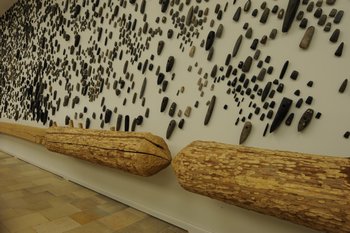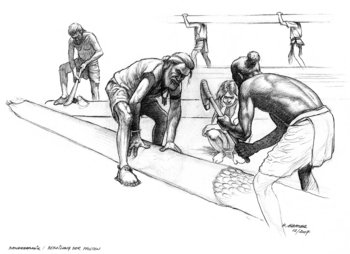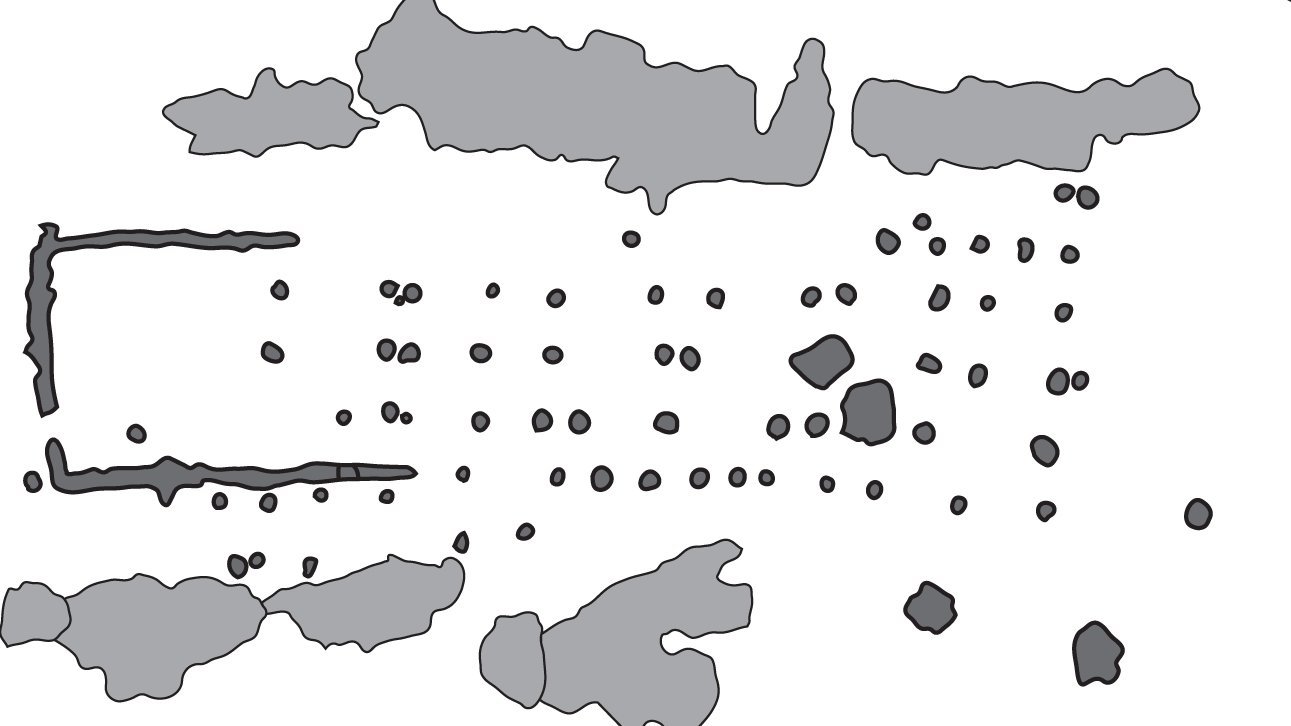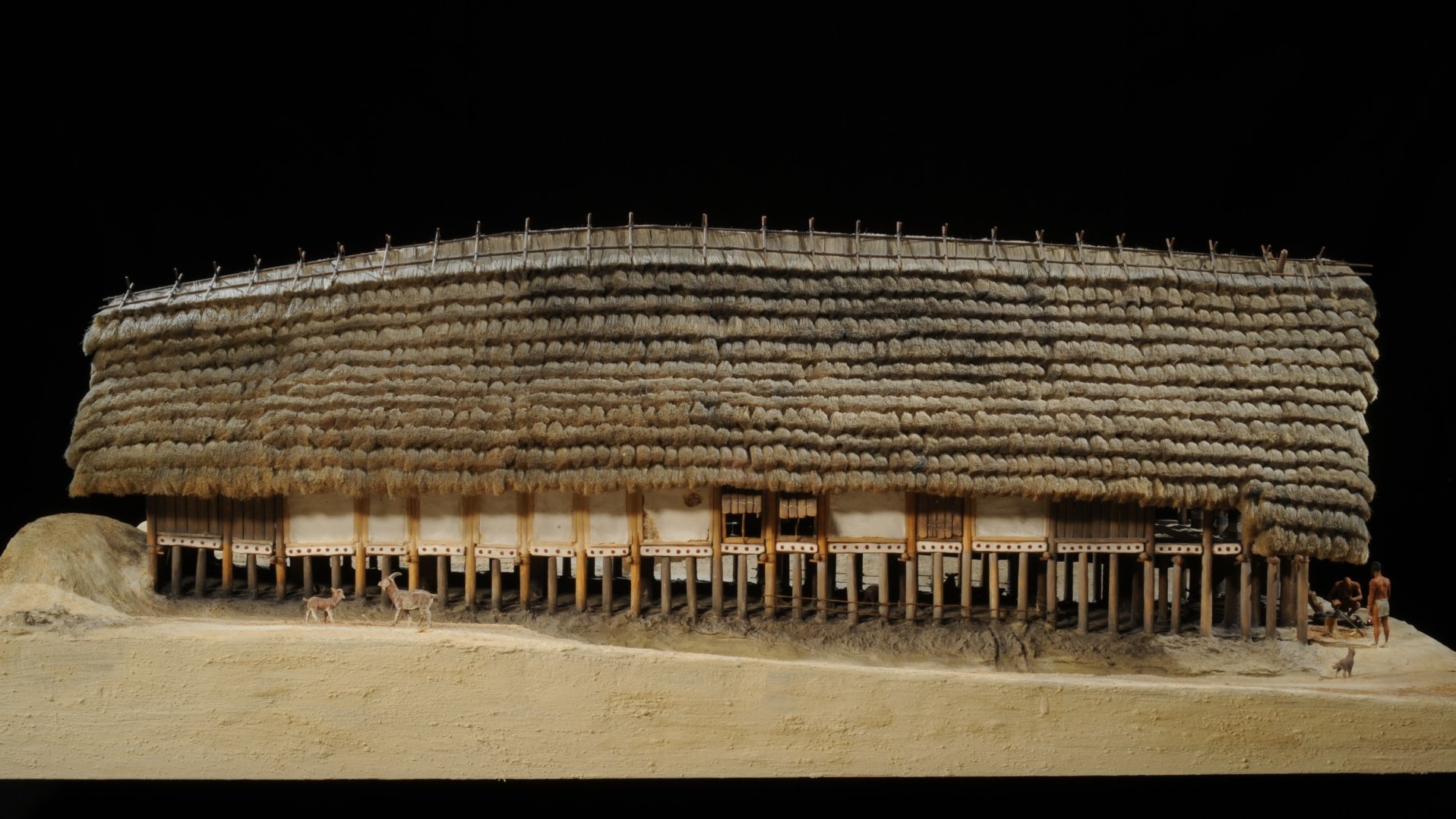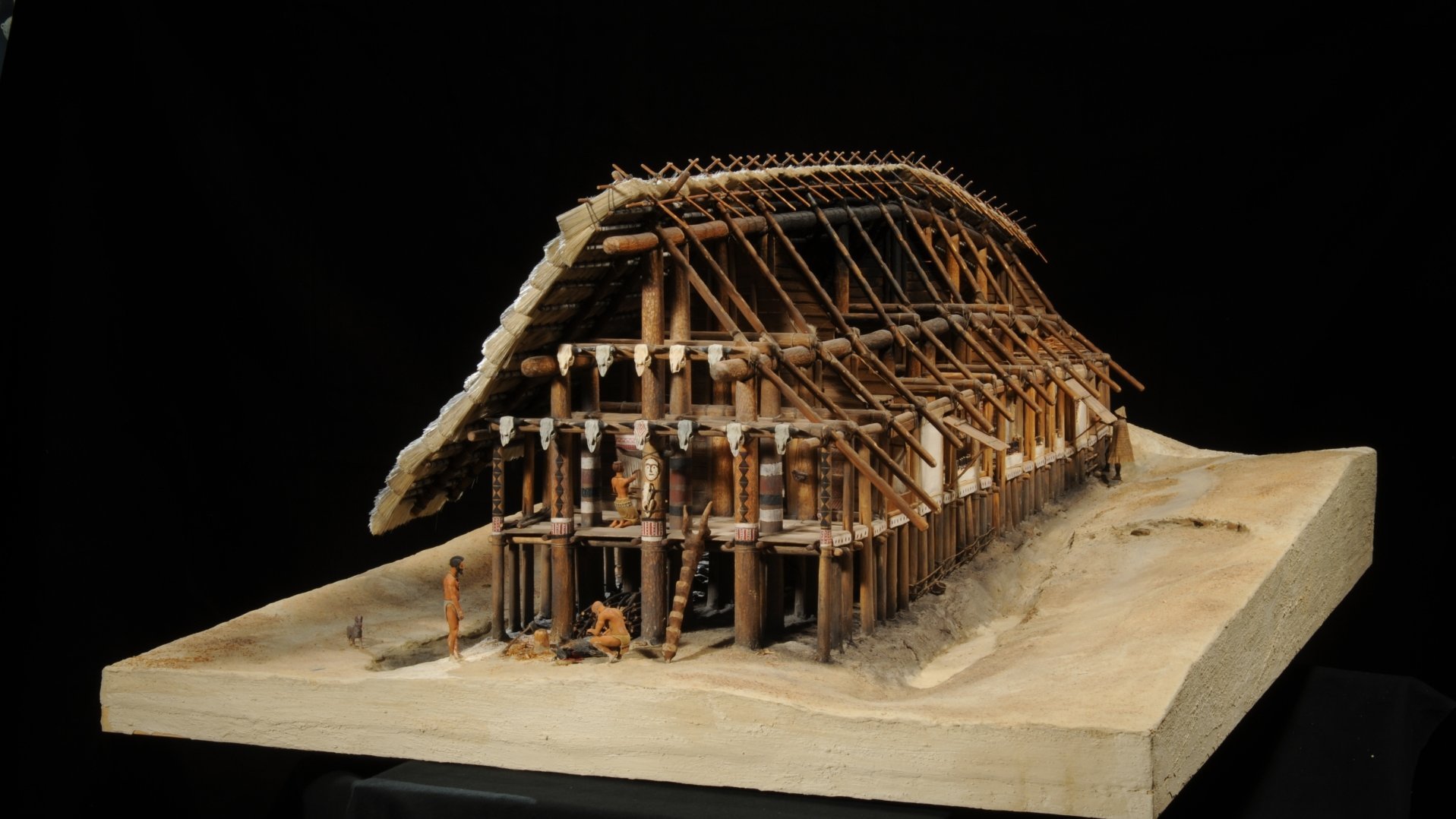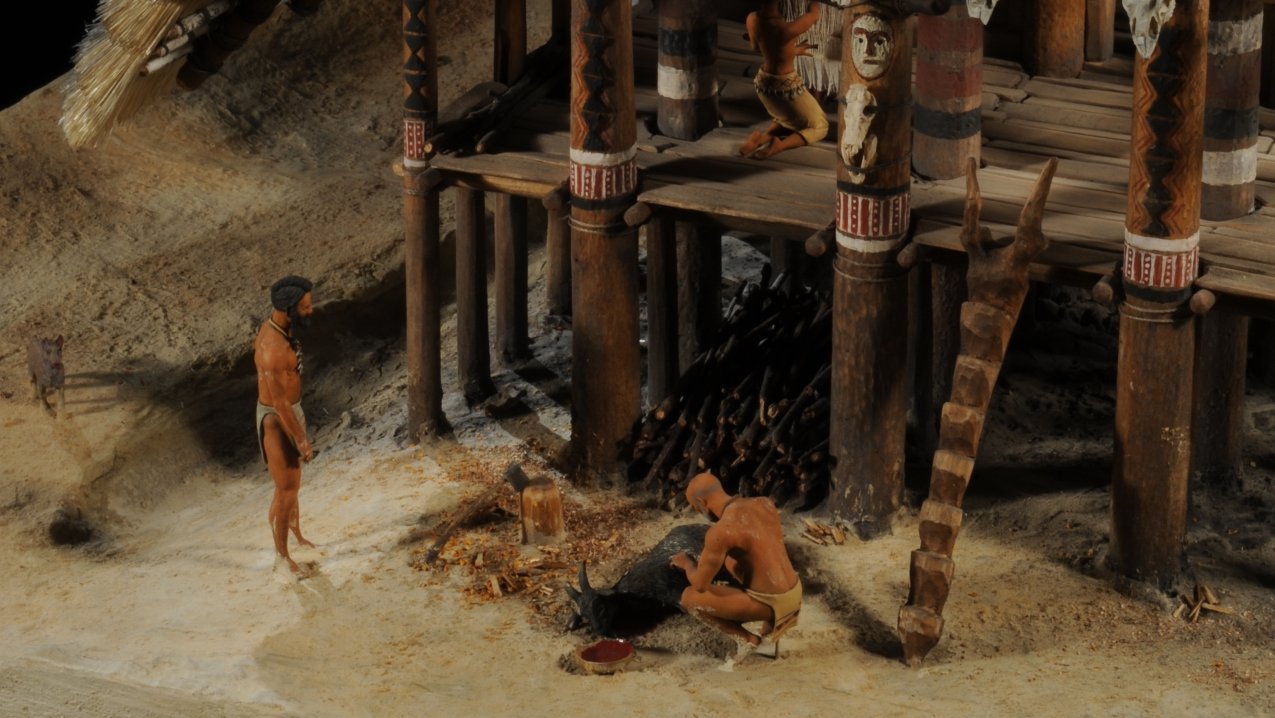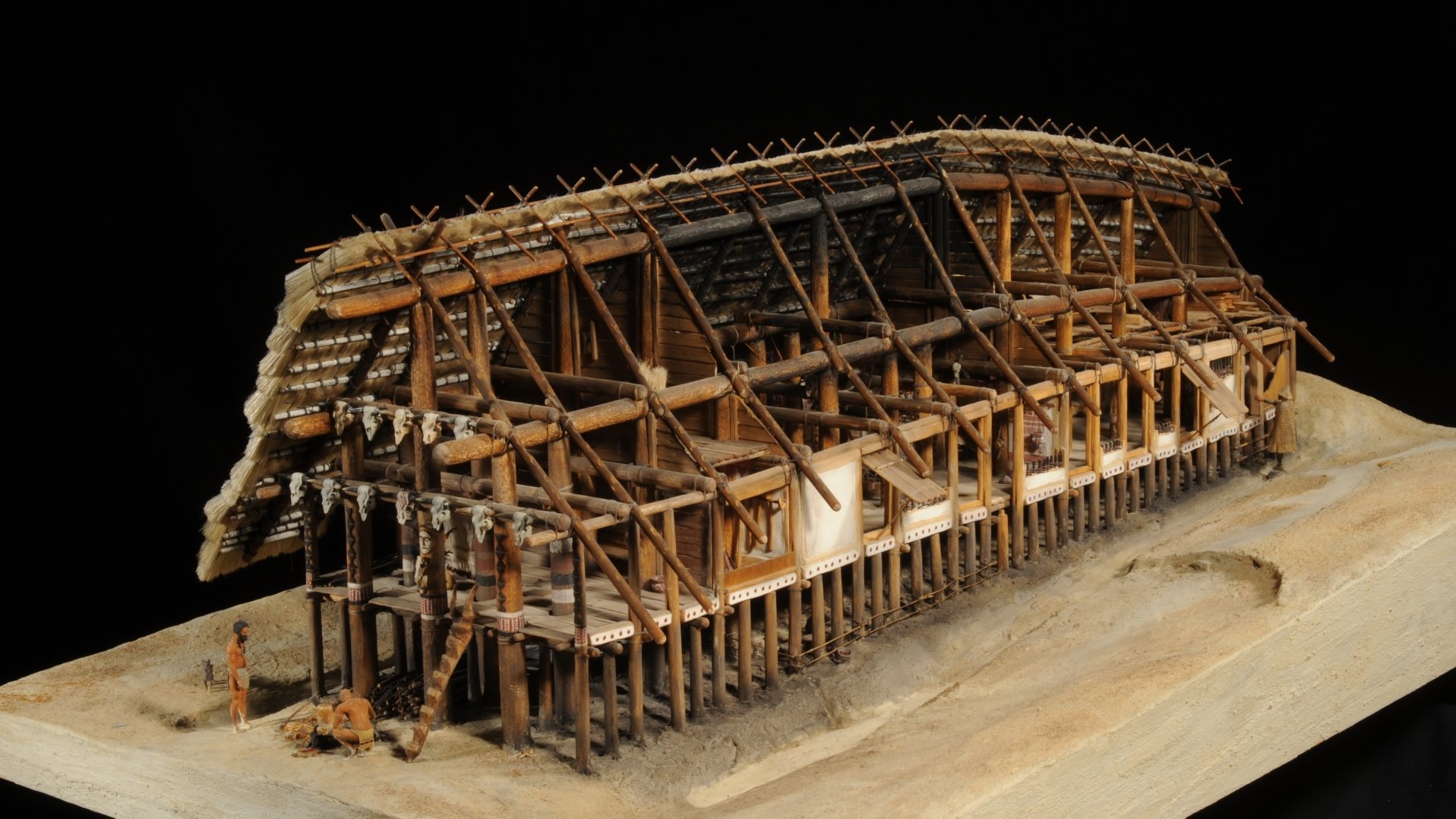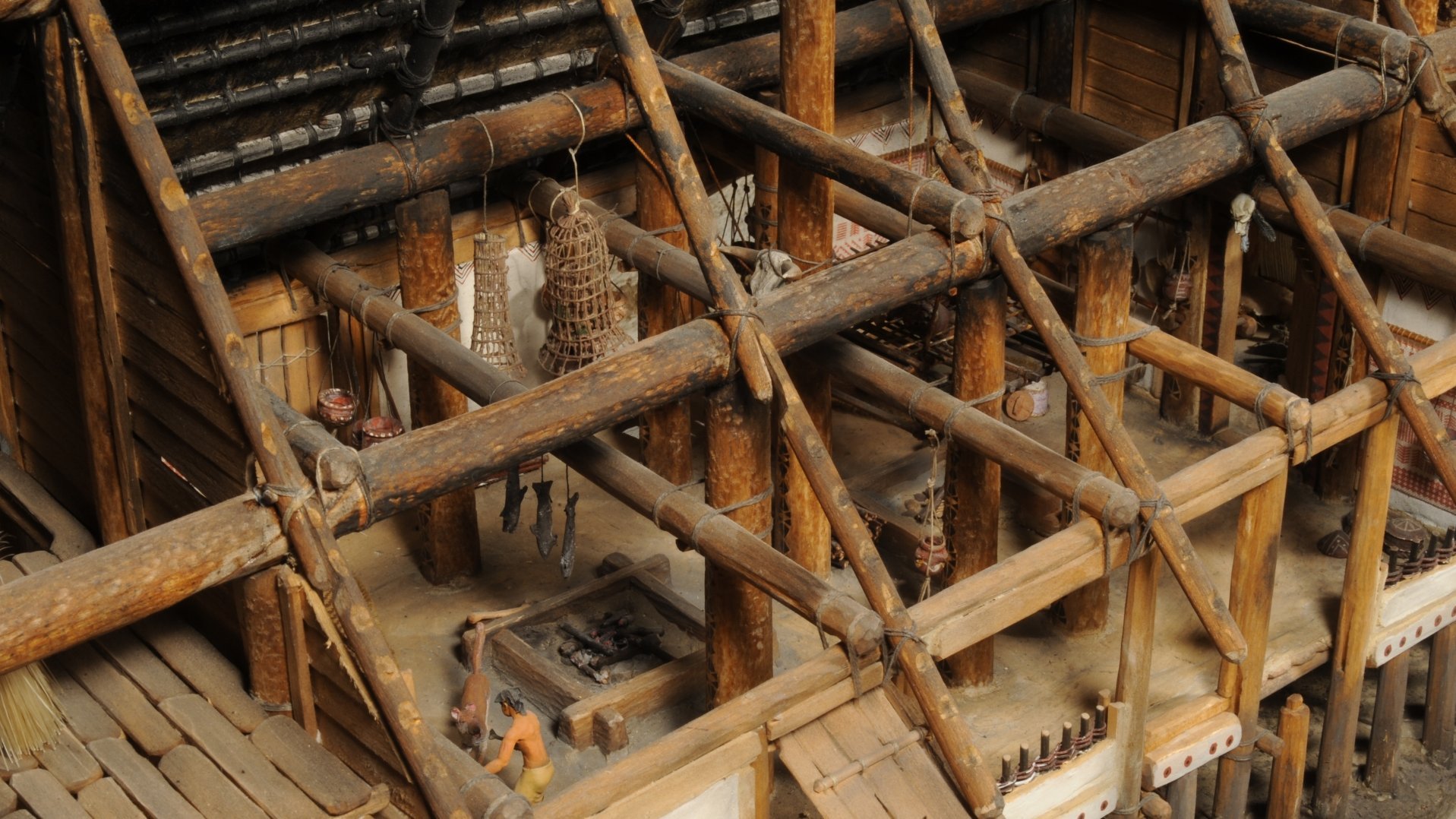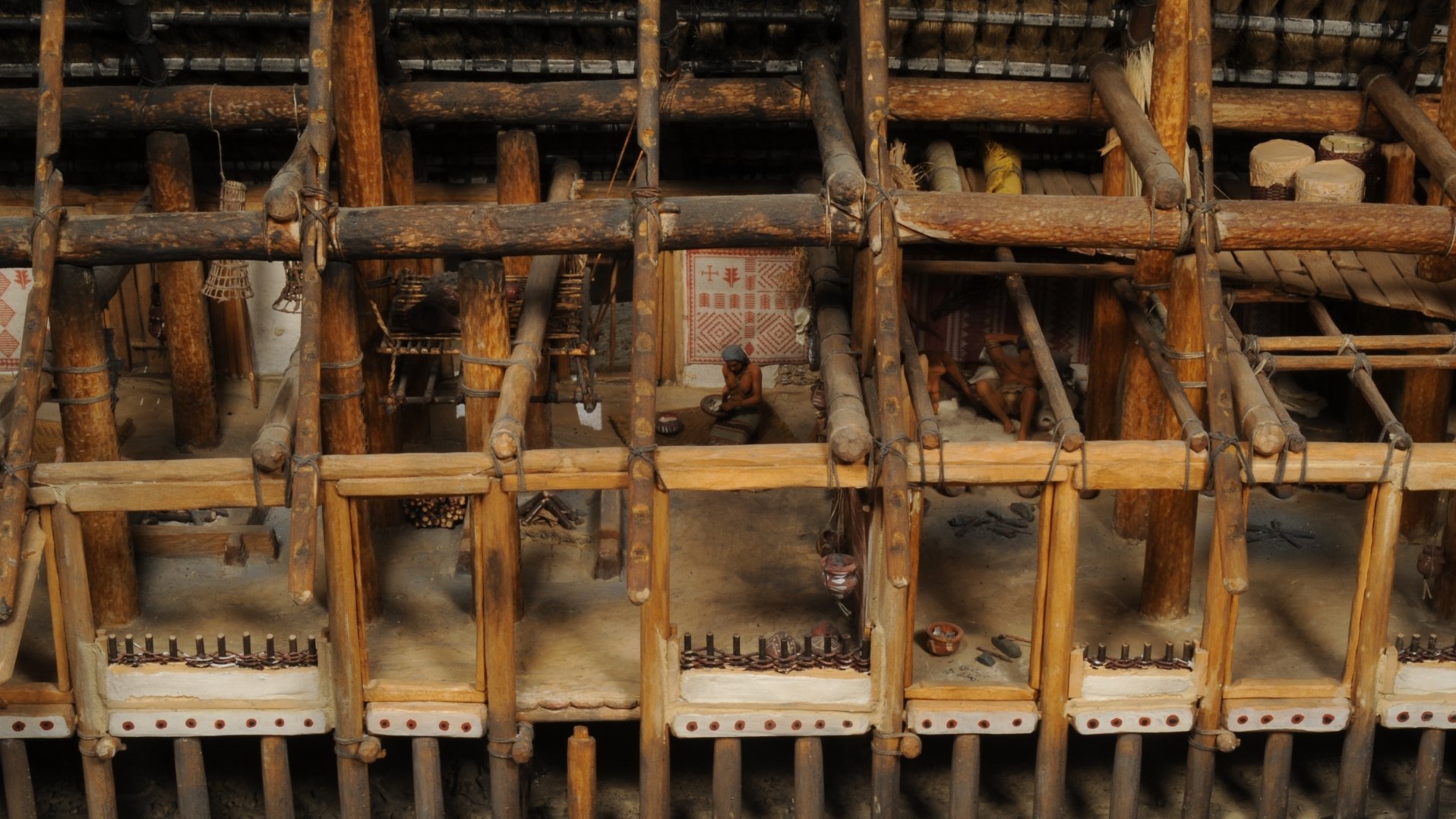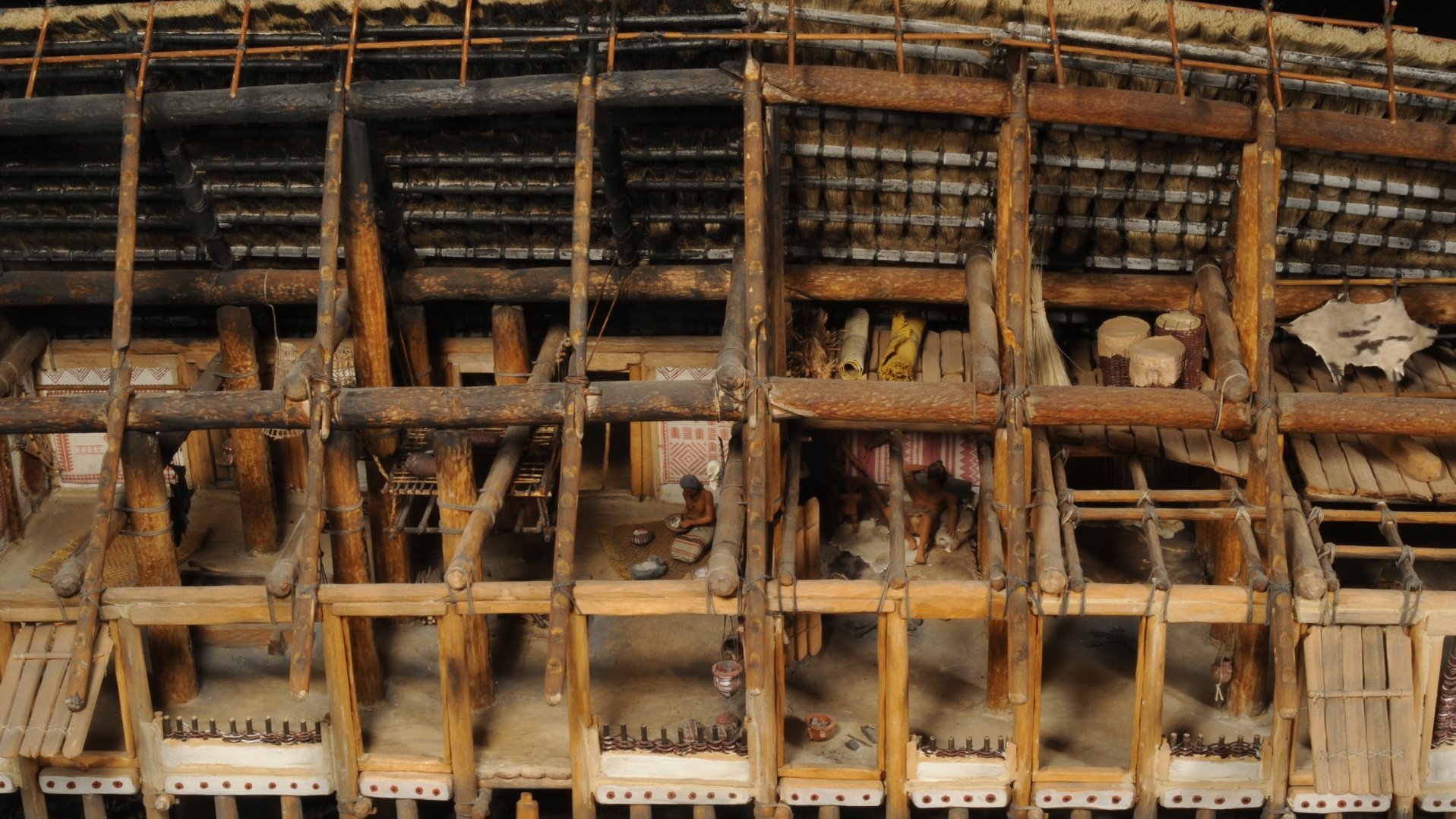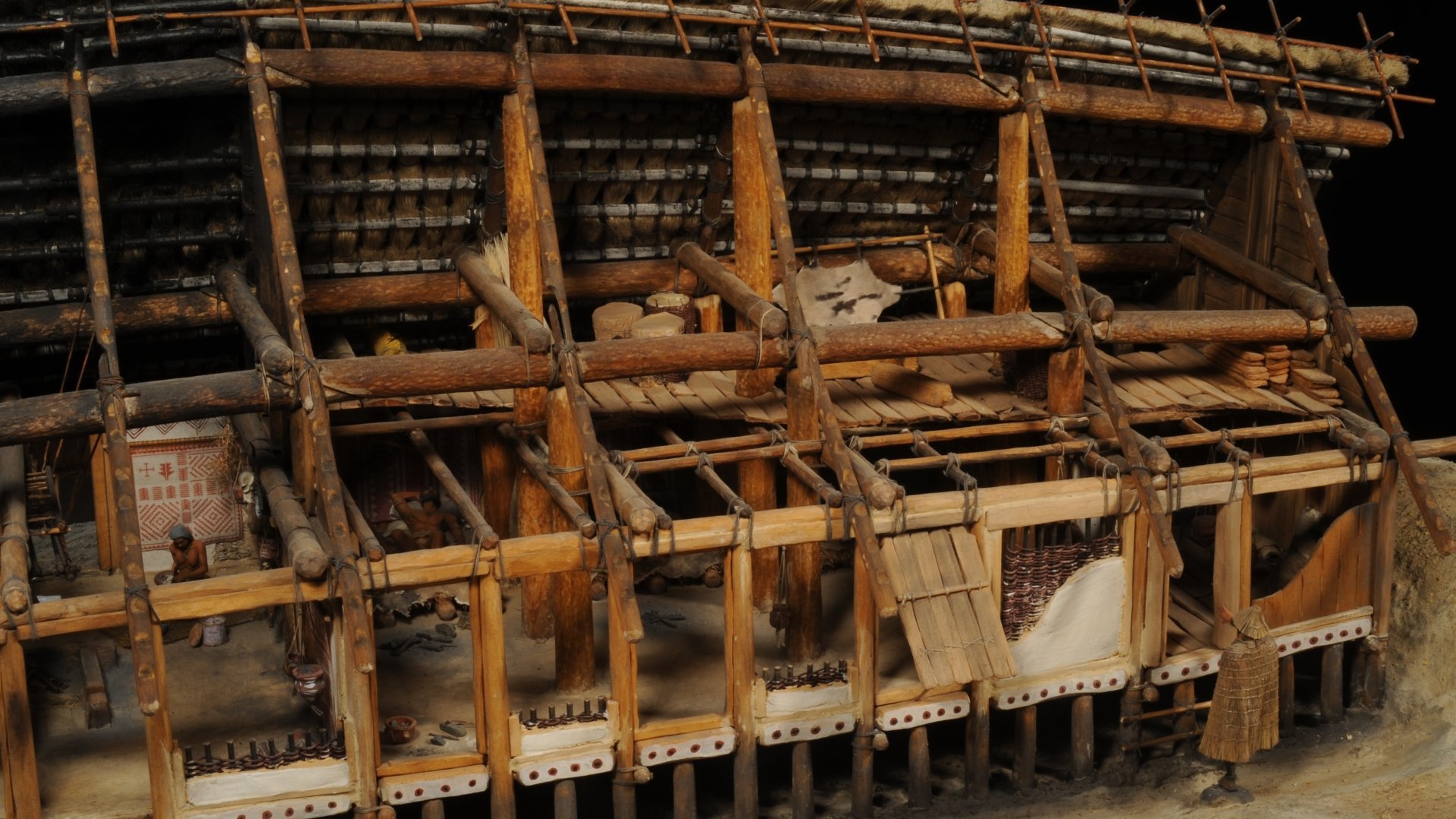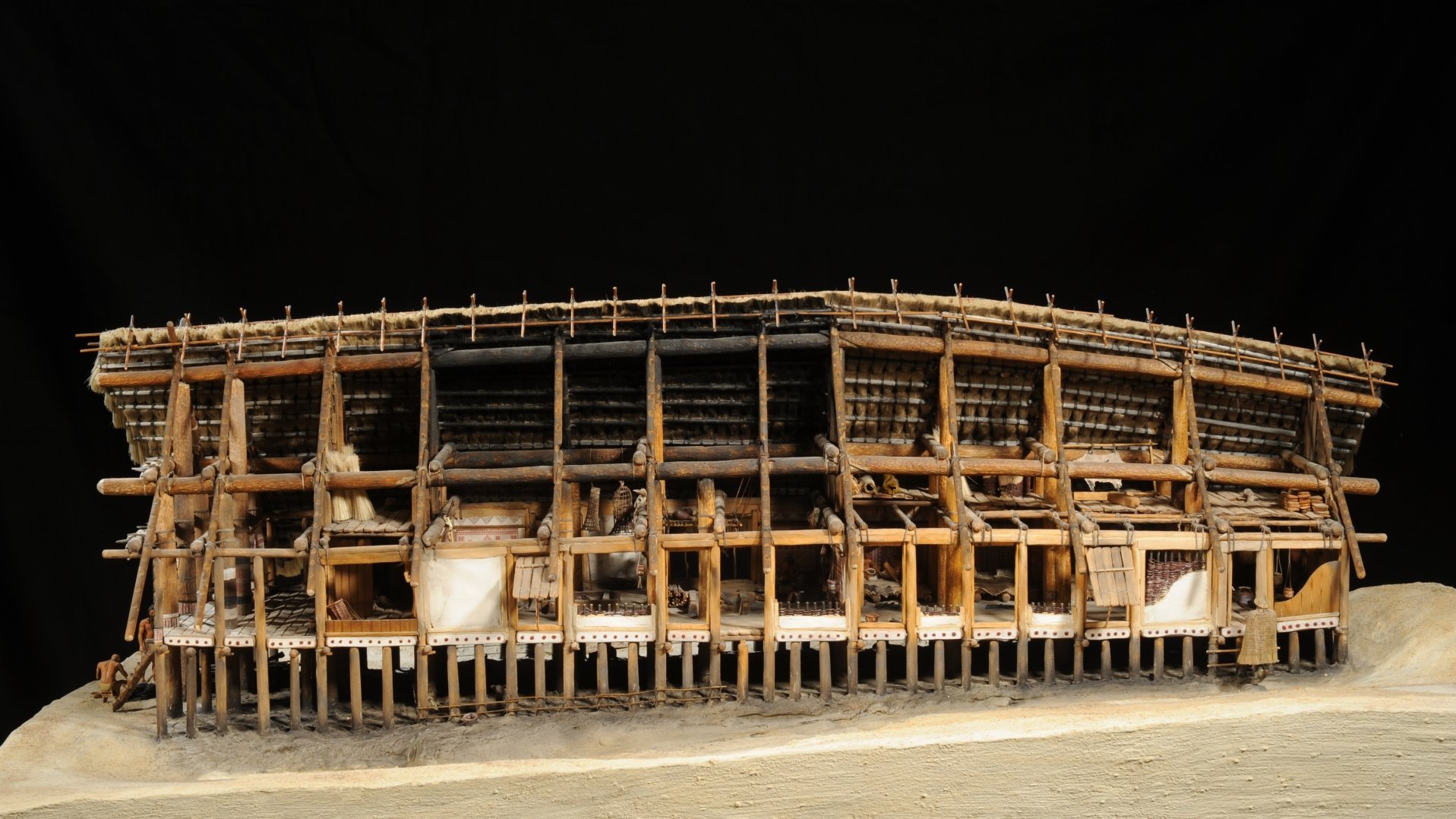Living Changes
Wood Age
Grey clouds of more than 3,000 uniformly aligned stone axes transform the long side of the large Neolithic exhibition room into a unique wall installation with a downright striking effect. The mass of hatchet, axe, and adze blades on display gives an idea of the extent of woodworking at that time and illustrates the massive human intervention in the environment. Since wood has only survived in exceptional cases due to its transience, its huge importance for Neolithic societies becomes indirectly tangible here. For the various new settlements alone – longhouses, wells, fences, palisades, and much more – the need would have been immense. Even countless tools and weapons only became usable in their actual function with a wooden shaft.
At the beginning of the Neolithic Age, a new, improved stone working technique was also established: stone grinding. Ground tools made from rock were indispensable implements for clearing woodland and woodworking because of their effective chopping and splitting effect.
Huge Longhouses
There are seldom settlement features on excavations that can be as clearly assigned to an archaeological culture as the longhouses of the Linear Pottery culture (approx. 5500 to 4800 BC). These residential buildings are based on a uniform construction plan: parallel rows of posts and outer walls made of split planks and wattle form the core of the four-aisled house. These buildings are often 40 metres long and 8 metres wide and probably served as accommodation for extended families or entire family groups. The typical pattern of the post holes is flanked by longitudinal pits, which were initially created when the loamy wall plaster was extracted, but later served to drain away rainwater and to dispose of rubbish – real treasure troves for archaeology!
Here you can find the film from the »Museum exklusiv« series of the State Museum of Prehistory »Rekonstruktion eines Langhauses« (German version only).
